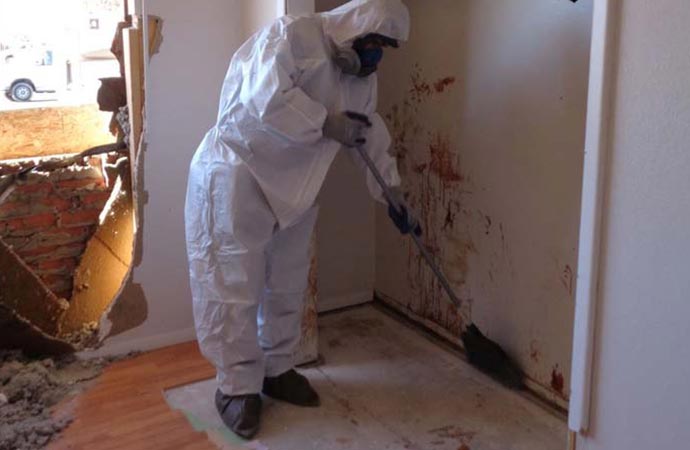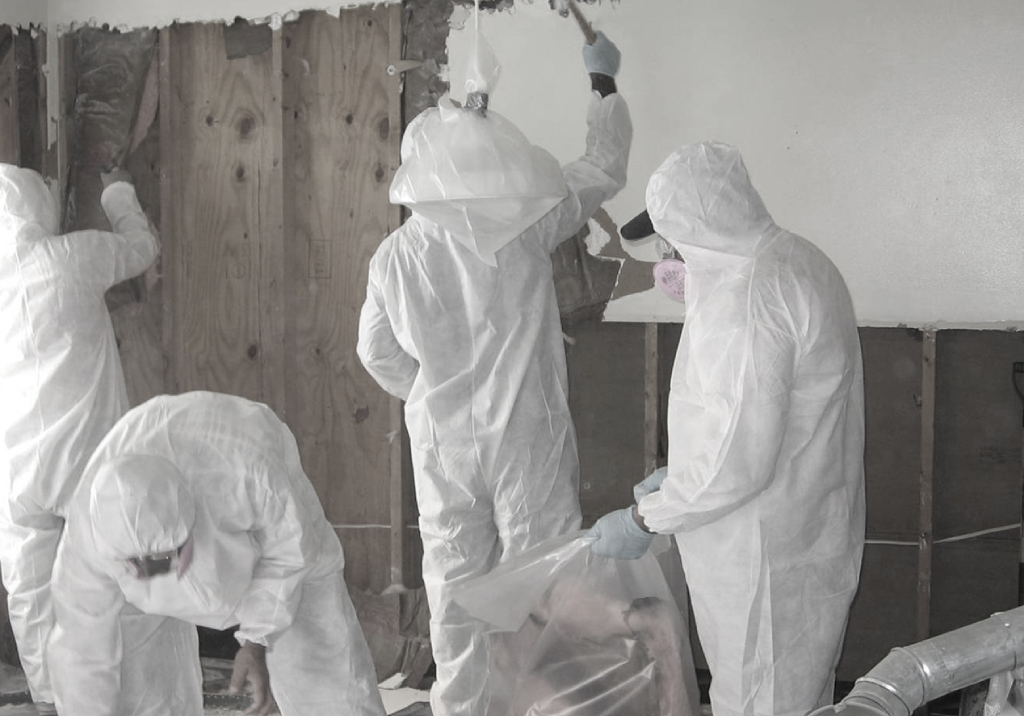Professional Biohazard Cleaning and Purification for Blood, Bodily Fluids, and Hazardous Materials
The prospective health threats linked with exposure to biohazards underscore the critical need for meticulous handling and detailed clean-up. As we browse the intricate landscape of biohazard cleaning, comprehending the nuances of laws, conformity, and the specific tools at play ends up being important in making certain a risk-free and thorough purification procedure.
Wellness Risks of Biohazard Direct Exposure
Exposure to biohazards poses significant health and wellness threats that can result in severe repercussions for areas and individuals alike. Biohazards incorporate a large range of organic compounds, including blood, physical fluids, mold and mildew, microorganisms, viruses, and other possibly transmittable products. When people enter call with these biohazards, whether with crashes, incorrect handling, or ecological direct exposure, they deal with the threat of contracting major ailments or diseases.
Among the key health and wellness threats connected with biohazard exposure is the transmission of contagious diseases. Bloodborne virus such as HIV, liver disease B and C, and various bacteria can be existing in biohazardous products, posturing a straight hazard to human health. Inhaling airborne biohazards like mold spores or entering into contact with contaminated surface areas can likewise cause respiratory system issues, allergic reactions, and other unfavorable health and wellness effects.
Furthermore, biohazard direct exposure can have lasting wellness implications, with some diseases manifesting years after the first call (Blood Cleanup). Consequently, it is important to focus on correct biohazard cleansing and purification to minimize these wellness risks and make sure the safety and security of people and neighborhoods

Specialized Training for Biohazard Cleaning
When it comes to managing biohazard clean-up successfully and securely, specialized training plays an essential function in ensuring appropriate purification treatments are adhered to. Biohazard cleaning needs specific understanding and skills to properly mitigate risks related to bloodborne microorganisms, physical fluids, and unsafe materials. Specialists educated in biohazard cleaning go through strenuous instruction on exactly how to safely handle, eliminate, and take care of biohazardous products to avoid contamination and direct exposure.
Specialized training for biohazard clean-up covers a variety of vital subjects, consisting of correct personal safety tools (PPE) usage, bloodborne pathogen awareness, decontamination strategies, and hazardous waste disposal protocols. Individuals learnt biohazard clean-up are furnished with the necessary knowledge to examine contamination levels, identify potential threats, and implement ideal cleaning treatments in compliance with regulatory requirements.
Continual training and education are vital in the area of biohazard clean-up to remain upgraded on the most up to date purification innovations, security protocols, and regulations. By buying specialized training, biohazard clean-up experts can properly respond to emergency cleanup situations and safeguard both public health and the environment.
Significance of Appropriate Purification Methods
Using proper decontamination techniques is vital in biohazard cleaning to effectively lessen and eliminate hazardous materials health dangers. Efficient purification not only makes certain the elimination of visible traces of blood, bodily liquids, and various other biohazards however likewise targets unseen microorganisms that may position major health and wellness hazards if not appropriately gotten rid of. By complying with rigid decontamination procedures, educated experts can considerably minimize the danger of direct exposure to hazardous microbes, viruses, and bacteria that can result in illness or infections.
Appropriate purification techniques involve making use of specific devices and anti-bacterials that are particularly developed to reduce the effects of biohazards successfully. Thorough cleansing and sanitation of infected locations are necessary to avoid the spread of microorganisms and ensure a secure atmosphere for passengers. Additionally, the appropriate disposal of biohazardous waste complying with decontamination treatments is essential in protecting against contamination of other surfaces or people.

Tools and Devices for Safe Clean-up
When dealing with blood, bodily liquids, or harmful materials, biohazard cleaning experts depend on specialized equipment to minimize direct exposure threats and extensively decontaminate the damaged area. Furthermore, biohazard cleansing packages consisting of disinfectants, absorbing materials, and biohazard bags are used to securely dispose and have of infected things.
Advanced cleansing tools like hospital-grade anti-bacterials, HEPA-filtered vacuums, and misting equipments are utilized to sanitize surfaces and eliminate biohazards effectively. Specialized devices such as sharps containers and biohazard waste disposal containers are made use of to securely handle sharp things and biohazardous waste products. By using the appropriate equipment and tools, biohazard cleansing professionals can ensure a detailed cleanup procedure that prioritizes safety and lessens wellness threats for both workers and passengers of the damaged space.
Regulations and Compliance in Biohazard Cleansing
Correct adherence to regulations and compliance criteria is vital in biohazard cleansing to make certain the safety of both workers and the environment. Government companies such as OSHA (Occupational Safety and Health And Wellness Administration) and the EPA (Epa) have established details guidelines for biohazard cleanup procedures to reduce health risks and environmental contamination. These laws cover a series of facets including the handling, transportation, and disposal of biohazardous products, as well as the necessary training and protective devices required for employees included in the cleaning procedure.
Biohazard osha - blood clean up procedures cleansing companies need to remain updated with these laws to guarantee that their procedures meet the needed safety and security standards. Failure to abide by these laws can cause serious effects, including penalties, lawful activity, and jeopardizing the health of individuals and the setting. By complying with rigid guidelines and compliance measures, biohazard cleaning business can properly mitigate threats and make sure a extensive and safe cleanup process for all celebrations involved.
Verdict
Finally, biohazard cleaning and purification require specialized training, correct methods, and adherence to go to this web-site laws. Exposure to blood, physical liquids, and dangerous materials poses substantial wellness dangers, making it vital to use the best tools and devices for risk-free clean-up. By following rigorous protocols and guidelines, specialists can efficiently mitigate the dangers related to biohazard exposure and make sure the safety and security of both themselves and others.
As we browse the elaborate landscape of biohazard clean-up, comprehending the subtleties of regulations, conformity, and the customized tools at play ends up being important in making certain a risk-free and thorough decontamination process. (Blood Cleanup)
When it comes to dealing with biohazard clean-up efficiently and safely, specialized training plays a fundamental role in making certain proper decontamination procedures are adhered to.Making use of appropriate purification techniques is crucial in biohazard cleaning to efficiently get rid of harmful materials and reduce wellness dangers. Furthermore, biohazard cleansing packages having anti-bacterials, absorbent materials, and biohazard bags are utilized to securely dispose and contain of polluted products.
Federal government firms such as OSHA (Occupational Safety And Security and Wellness Management) and the EPA (Environmental Protection Firm) have click reference established certain guidelines for biohazard clean-up procedures to lessen health and wellness threats and environmental contamination.